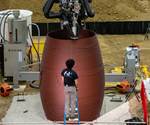NASA report captures decades of aerospace composites development
The updated, two-volume report details NASA's role in advanced materials and composites development since pre-WWII, and offers areas for future research.
NASA has released updated versions of its reports detailing the organization’s role in the development of composites and other advanced materials for aerospace applications.
The two-volume report covers NASA Langley Research Center’s (Hampton, Va., U.S.) advancements in the research and use of aerospace structural materials and manufacturing processes from pre-WWII to 2014, from light alloys through to polymers and composites.
The documents capture, through case studies and examples, the knowledge gained by NASA researchers over the years, present lessons that were learned, assess emerging technologies and identify challenges and areas for future research and improvement.
Electronic copies are available for free download on NASA’s Technical Reports Server:
Related Content
-
Development of a composite liquid hydrogen tank for commercial aircraft
Netherlands consortium advances cryogenic composites testing, tank designs and manufacturing including AFP, hybrid winding, welding of tank components and integrated SHM and H2 sensors for demonstrators in 2025.
-
“Structured air” TPS safeguards composite structures
Powered by an 85% air/15% pure polyimide aerogel, Blueshift’s novel material system protects structures during transient thermal events from -200°C to beyond 2400°C for rockets, battery boxes and more.
-
Plant tour: Airbus, Illescas, Spain
Airbus’ Illescas facility, featuring highly automated composites processes for the A350 lower wing cover and one-piece Section 19 fuselage barrels, works toward production ramp-ups and next-generation aircraft.
.jpg;width=70;height=70;mode=crop)


